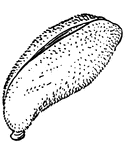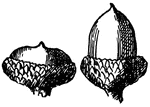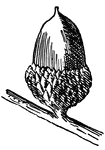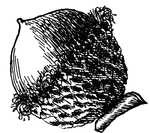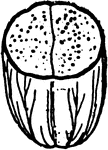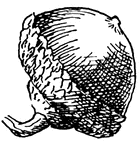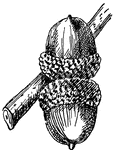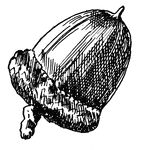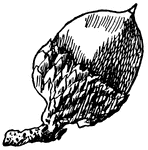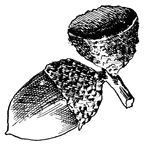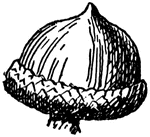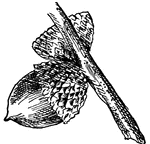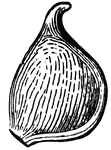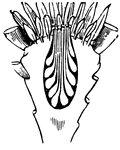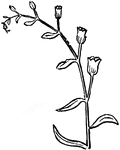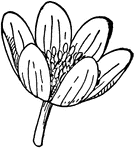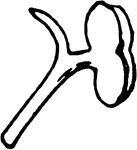
Glossy Abelia
"Ornamental plants, cultivated chiefly for their handsome flowers. The Abelias are small or medium-sized…
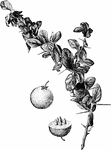
Aberia Caffra
"Aberia Caffra, Hook. f. & Harv. Fig. 59. Thorny, glabrous: lvs. obovate, obtuse, cuneate at base, entire:fls.…
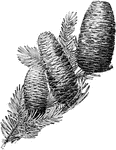
Cones of Abies
"Fig. 61- Cones of Abies- From bottom to top, A. concolor (White Fir), A. Nordmanniana (Nordmann Fir),…
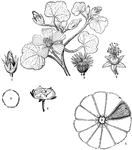
Abutilon
"Abutilon macropodum. 1. an unexpanded flower; 2. the stamens and styles; 3. a ripe fruit, consisting…
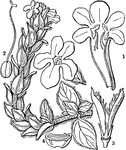
Acanthus
"Nelsonia campestris. 1. flowers; 2. pistil; 3. capsule; 4. cross section of a seed." -Lindley, 1853

Achiote
"Bixa orellana. 1. a pistil and two stamens; 2. a cross section of the ovary; 3. a ripe fruit. 4. a…
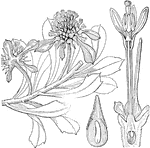
Acicarpha
"Acicarpha spathulata. 1. section of an entire flower; 2. perpendicular section of ripe fruit." -Lindley,…

Winter Aconite
The Winter Aconite (Eranthis hyemalis) is a European plant in the Ranunculaceae family of buttercups.
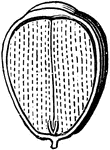
Acorn
Half of an acorn, cut lengthwise, filled by the very thick cotyledons, the base of which encloses the…

Germinating Acorn
Here is a representation of the acorn which has germinated. The roots go down while the stalk goes up.

Longitudinal section of an acorn
A longitudinal section of an acorn, showing two cotyledons and the embryo.
Southern Adderstongue
"Adder's tongue fern (Ophioglossum vulgatum L.). R, runner or stolon." -Gager, 1916

Southern Adderstongue
Ophioglossum vulgatum, or Southern Adderstongue is a fern-like plant commonly growing in sand dunes.

Agaricus cepaestipes
Agaricus cepaestipes is a mushroom from a large genus with both edible and poisonous species.
Twin-Flowered Agave
Littaea geminiflora, or the Twin-Flowered Agave, showing the flower and the whole plant.

Alangium
Marlea begonifolia or Alangium chinense is an evergreen tree native in China used for its medicinal…

Alga
Magnified view of some of a simple fresh water Alga, the Tetraspora lubrica, each sphere of which may…

Almondleaf Willow Leaf
This shows the leaf of the Almondleaf Willow, Salix amygdaloides, (Keeler, 1915).
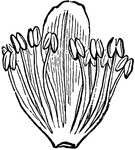
American Linden
One of five stamen-clusters of the flower of American Linden, with accompanying scale.
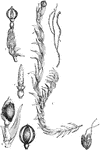
Andrea nivalis
"Andrea nivalis, natural size; 2. the same much magnified; 3. spore-case with the torn calyptra; 4.…

Garden Angelica
The flowers of Archangelica officinalis, or the Garden Angelica, a flowering plant in the Apiaceae family.

Annona
"Anona furfuracea. 1. an expanded flower; 2. a vertical section of male and female apparatus, which…
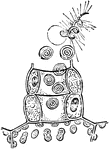
Antheridium of Bracken
An illustration of the anteridium of a bracken. An antheridium (plural: antheridia) is a haploid structure…

